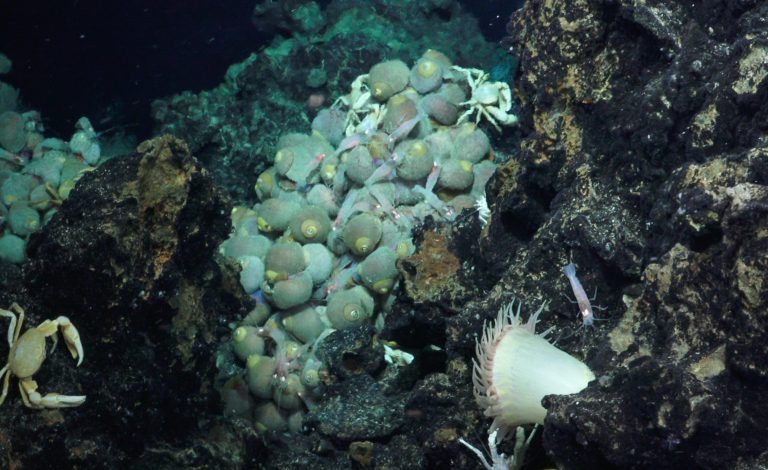Great start for the Searching For Life in the Mariana Back-Arc cruise
As our #HydrothermalHunt expedition transitions into its second week, we get to reflect on the amazing things we’ve seen so far. The best way to catch up is to take you down with the ROV right to the seafloor and watch our first week video highlights with amazing footage of the strange underwater environments filled with molten sulfur chimneys and all sorts of animal life teeming around hydrothermal vents.
Adapting to change
Weather conditions flipped our schedule around, and we first headed north to where the winds and seas were more favourable and made several dives in the Mariana arc, visiting Daikoku and Chamorro seamounts. We’ve now transited south to the back-arc area, and begun exploring Alice Springs, a much deeper site around 3600m, last visited 20 years ago. From our initial inspections there seems to have been a noticeable reduction in hot venting. We still found some low temperature vents covered with snails, shrimps, lobsters, crabs and the occasional anemone. We collected good samples on our first dive site (Illium vent field), but we’re now trying to go back in to explore slightly further south. You can follow dive #39 here.

Filling in the gaps
This transition from arc to back-arc is part of our greater goal to understand how these areas differ from each other, and how the animal species vary between sites. How are these animals surviving at the edges of extreme natural conditions? Week two looks set to fill a big gap in our understanding of deep sea ecosystems, and everyone is hoping for some brand new discoveries. Stay tuned for the latest on dives by following us on Twitter, and Facebook, as well as tracking the hashtag #HydrothermalHunt.
![ROV SuBastian uses a fluid sampler to assess the vent, as a black and white 'robo snail' measures the temperatures supporting this large group of [non-robo] snails.](https://schmidtocean.org/wp-content/uploads/FK161129Alice-Springs-Low-Temperature-Vent20161206SS01small-768x515.jpg)

